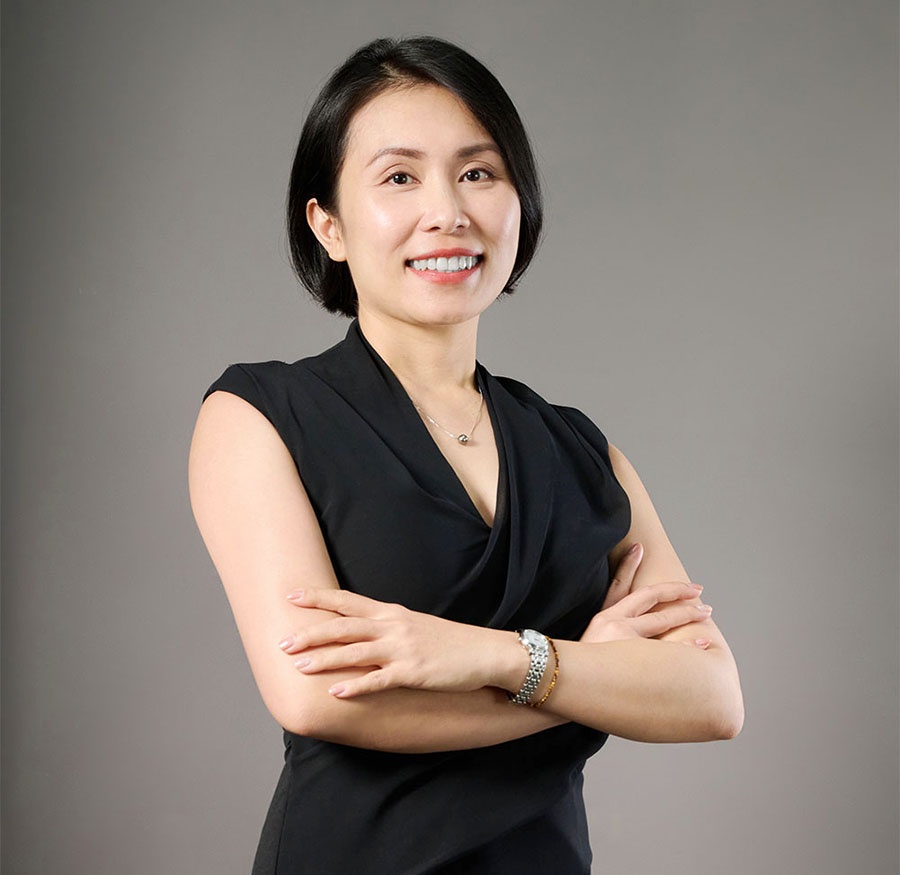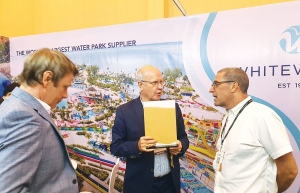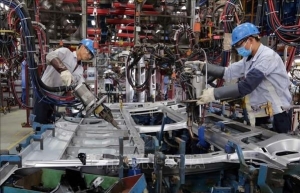Procedures and practices to lure quality foreign investment
 |
| Trang Le - head of Research and Consulting at JLL Vietnam |
What has been the situation of attracting foreign direct investment (FDI) in Vietnam’s real estate in recent times?
There have been positive and clear changes in the quality of Vietnam’s industrial infrastructure in the past five years. In 2018, JLL Vietnam had the opportunity to work with a large-scale global investment fund when they began to look at the development potential of the industrial real estate sector in Vietnam. The participation of that foreign investor in the Vietnamese market has led to others entering the market too.
More importantly, foreign investors when entering the market have brought along new industrial real estate development standards. As a result, Vietnam’s factories and warehouses now are of the same quality of other countries in the region.
Some projects have integrated green criteria and functions into their development and operation cycle. The inflow of foreign funding also brings with it the demand for green development by manufacturers. In general, it has raised the quality of Vietnam’s real estate to a new level.
In addition, during this period we also saw significant developments in the retail and office real estate segments. These two segments have attracted investment in the past, but many are expressing their in-depth interest and are carrying out more detailed research in this area.
Most recently, Central Retail has committed $1.45 billion to the retail segment of the Vietnamese market before 2027.
How has the change of FDI inflows in recent years taken place?
Vietnam is in its second cycle of the real estate market. There was a very fast growth period in 2007/2008 before it bottomed out the following year and started to recover in 2013. In 2014, the market entered a new cycle again.
Looking back at the amount of FDI invested in real estate in Vietnam over the past few decades, we see that it was diverse in type, geographically spread, and more complex in terms of operational formats.
Specifically, in residential real estate, the multi-functional urban area model is becoming more popular. Integrated urban complexes combined with services are also more likely. Along with that, other new types of real estate such as cold storage, data centres, and industrial real estate are also developing potential in the market.
In terms of geographical location, in the past, only Hanoi and Ho Chi Minh City were of interest to foreign investors. Now, real estate projects have spread along the length of the country, especially in the provinces and cities located near the two economic and political centres.
In terms of operating model, in the past, residential property for sale dominated the market while there were few retail and office real estate properties for rent. However, these two segments are now very hot.
Diversification of properties has allowed investors to go beyond traditional cities to invest in larger-scale areas, especially in urban areas and the second-tier cities.
Logos Property Services and Manulife Financial have together invested more than $80 million in a logistics project across 116,000 square metres in Dau Giay Industrial Zone (IZ) in Dong Nai province. BW Industrial announced the purchase of about 74,000sq.m of land in Bac Tien Phong IZ in Quang Ninh province, adding to its list of 28 projects in 11 localities nationwide.
Meanwhile, CapitaLand Development signed an MoU with Bac Giang People’s Committee to develop a complex project with an industrial park, residential area, and logistics over 400 hectares, with an investment commitment of $1 billion in this northern province.
What measures should Vietnam take to attract more FDI into the real estate sector?
Vietnam still has to promote the completion of legal procedures for investment, improve the quality of infrastructure, and improve quality human resources.
Vietnam is one of the most open economies in Southeast Asia. As the economy grows and opens faster, the requirement and urgency of improving factors such as administrative procedures, quality of infrastructure, and quality of human resources become more crucial and needs to be further promoted.
Improvements in administrative processes must be made in practice and not just on paper. The level of competition of other countries in the region is also very fierce, so we must accelerate this issue to promptly attract more FDI into Vietnam.
 | Partnerships the key for next 35 years of foreign investment Vietnam Investment Review is holding a major conference on May 15 to discuss the 35-year journey of foreign investment in Vietnam, and how to foster new investment in the future, thus contributing more to Vietnam’s vision of becoming a developed, high-income country before the middle of the century. |
 | PM orders enhancement of foreign investment attraction efficiency Prime Minister Pham Minh Chinh has signed a directive clarifying tasks and solutions to enhance the efficiency of foreign investment attraction in the new period. |
What the stars mean:
★ Poor ★ ★ Promising ★★★ Good ★★★★ Very good ★★★★★ Exceptional
Related Contents
Latest News
More News
- Main drivers for Vietnam’s digital economy future (December 03, 2025 | 11:35)
- Pivotal stage of growth paves way for rise in M&As (December 03, 2025 | 10:00)
- Positive projections for M&A interest from Thailand (December 03, 2025 | 09:40)
- Manifesting the first line of defence in cybersecurity (December 03, 2025 | 09:00)
- The transformational role AI can play in accounting arena (December 03, 2025 | 08:00)
- Unlocking 5G-AI potential in Singapore (December 03, 2025 | 08:00)
- Data-driven strategies vital for a fast-evolving nation (December 02, 2025 | 09:41)
- Policy to practice: how Vietnam can lead the region (November 26, 2025 | 16:03)
- Mobilising private capital at scale vital for climate battle (November 26, 2025 | 15:36)
- VILAF and Yoon & Yang launch Vietnam - Korea Practice Unit (November 26, 2025 | 15:16)

 Tag:
Tag:




















 Mobile Version
Mobile Version